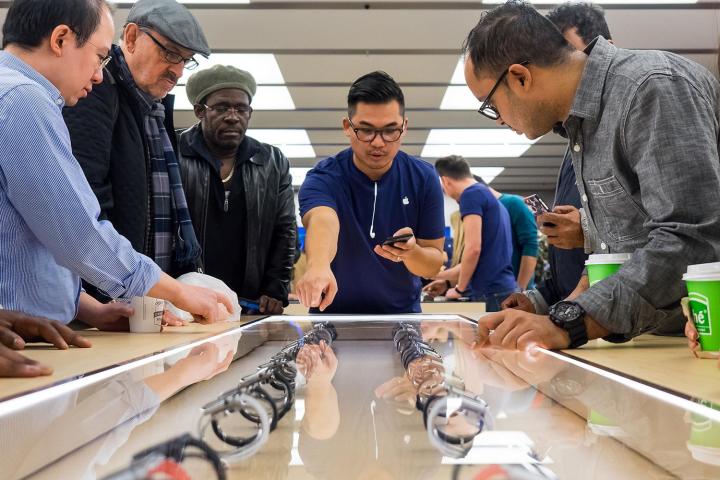
The company has been removing the security cables that lock iPhones down to their desks so that the cable won’t get in the way of customers as they interact with the devices. This also means it’s easier for someone to walk out with one of the devices on display, of course, but according to CNET, Apple isn’t too worried about it.
The phones will set off an alarm if someone takes them out of the store, and CNET says they will be “rendered unusable” if they aren’t returned. This likely means that Apple has special software to track and control these devices, though it’s unclear how it works.
Other devices are still tethered, and this new change begins with Apple’s new flagship store in London. The cables have been removed in two other stores in the U.K., and 9to5Mac reports a store in Canada has received the same treatment.
Apart from the lack of cables on iPhones, the new London store showcases Apple’s new retail design with greenery meant to resemble the setting of a “town square.” The company is also considering building a store across from Samsung’s headquarters in South Korea.
Apple released the iPhone 7 and 7 Plus in September, along with the Apple Watch Series 2. It’s rumored to be planning to refresh its Mac lineup sometime this fall.

